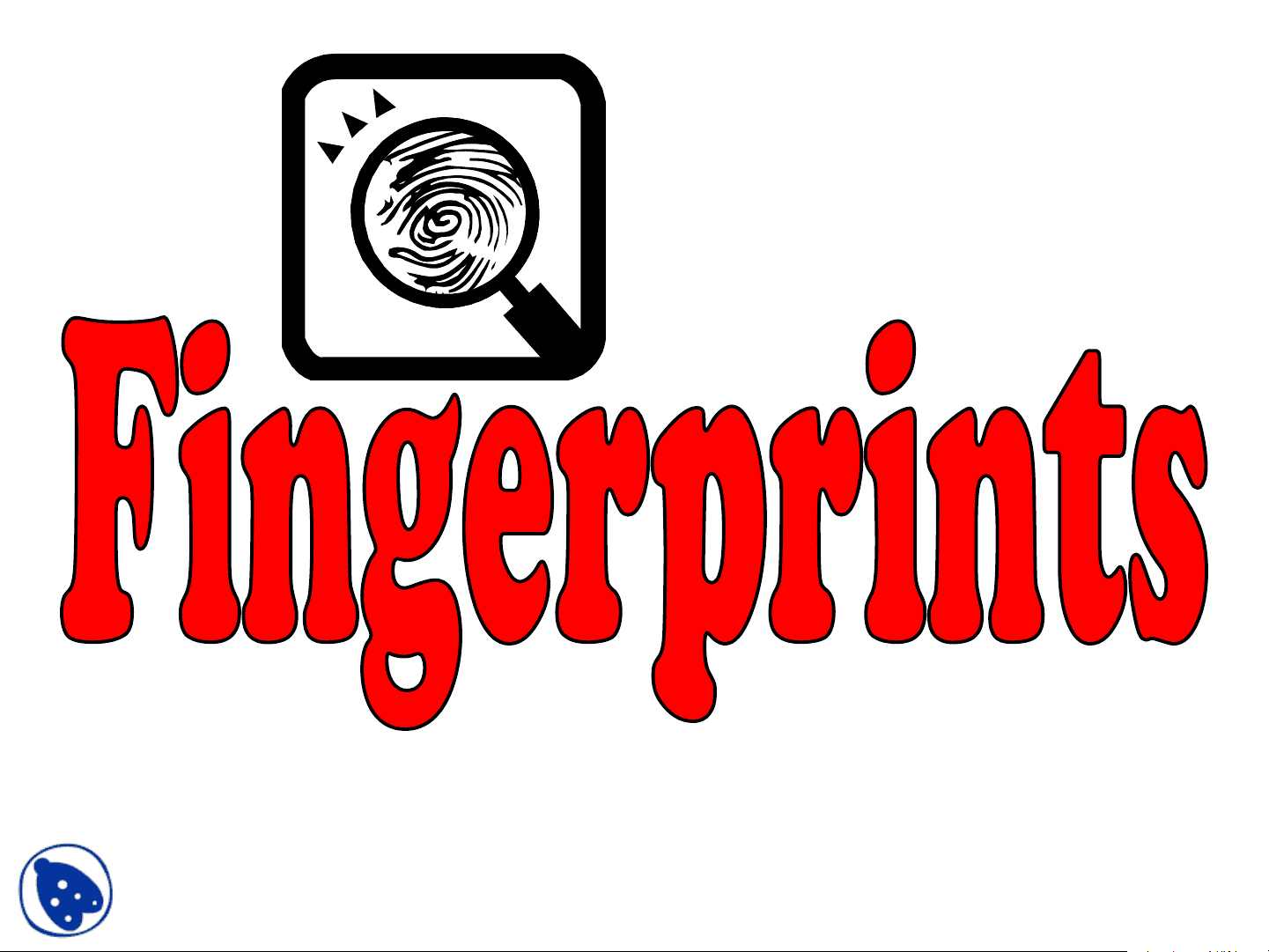
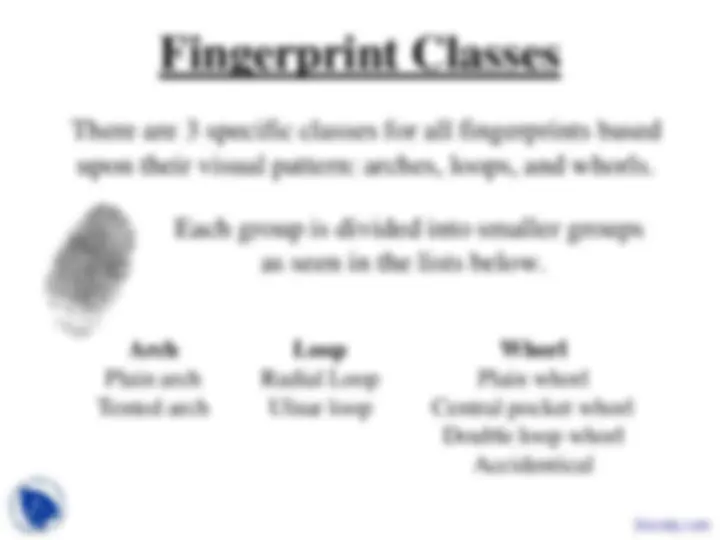
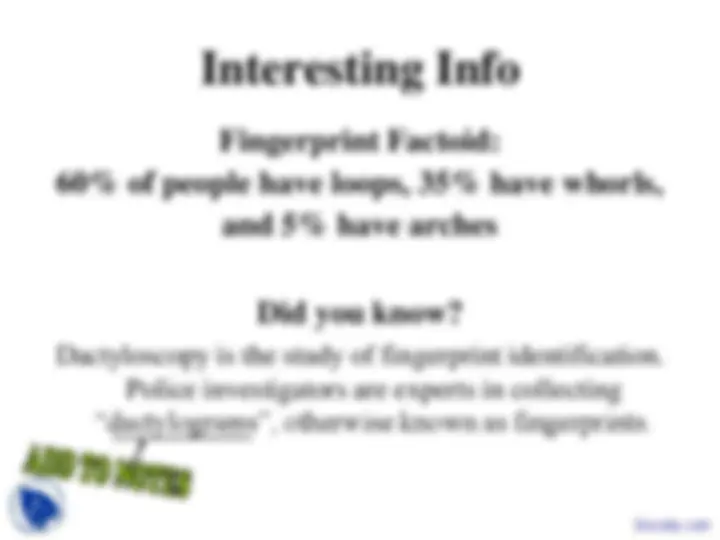
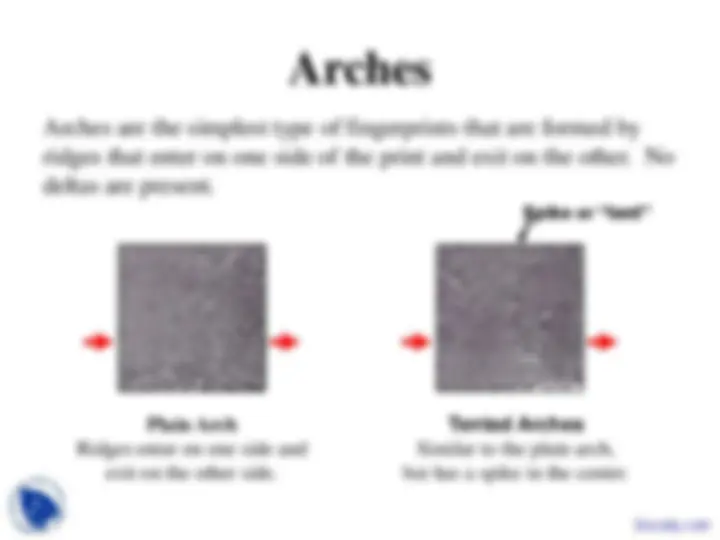
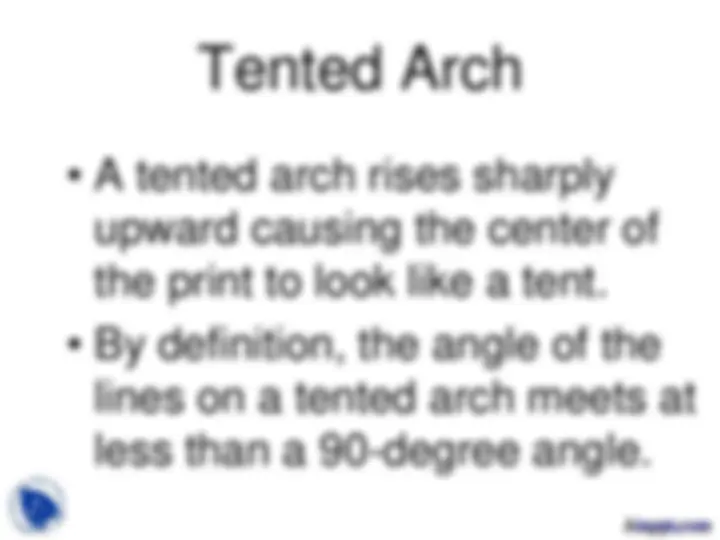
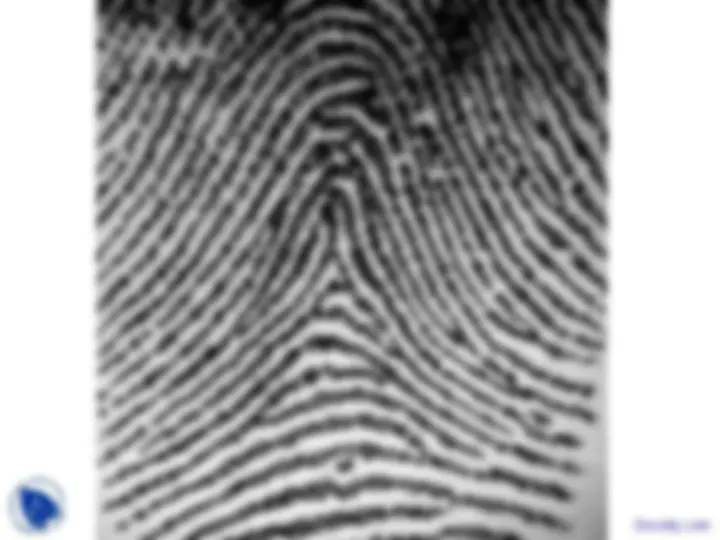
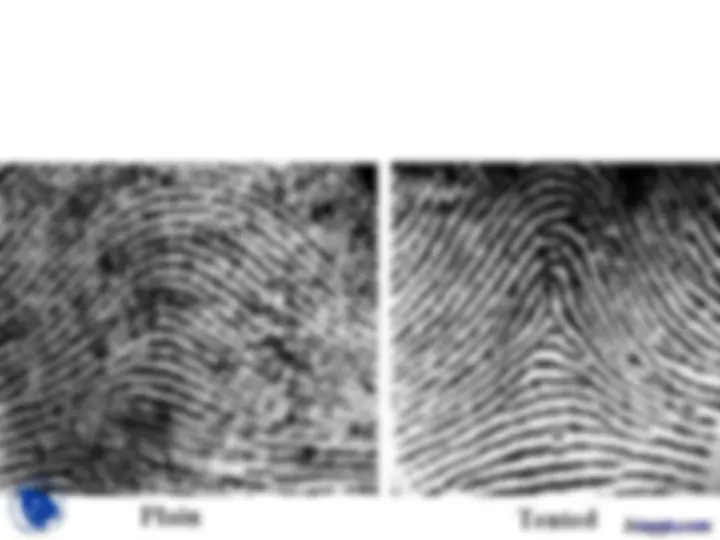
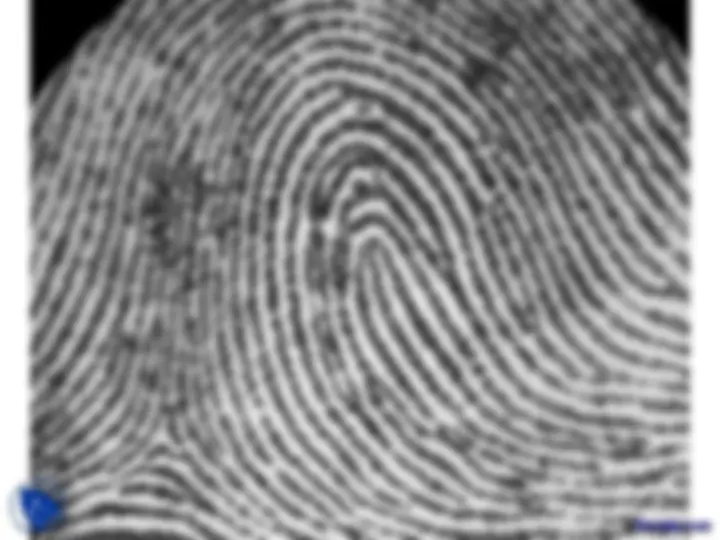
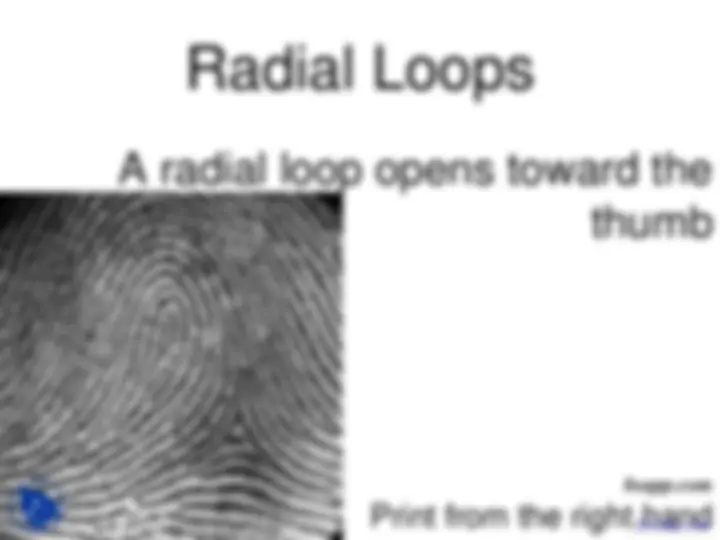
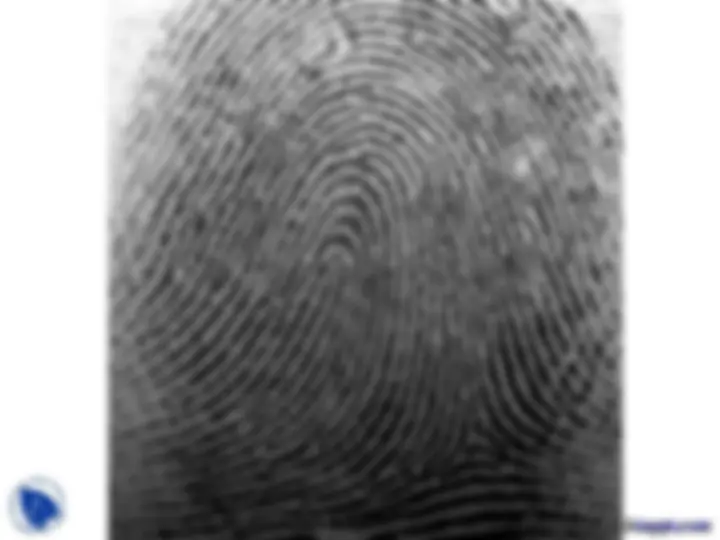

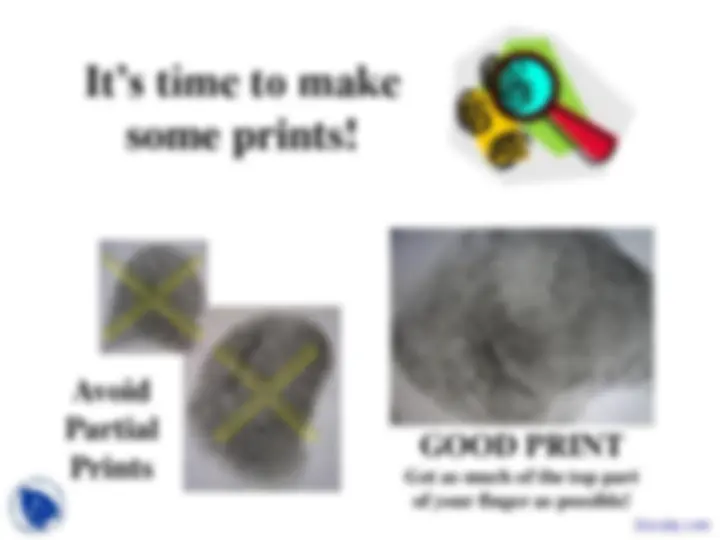
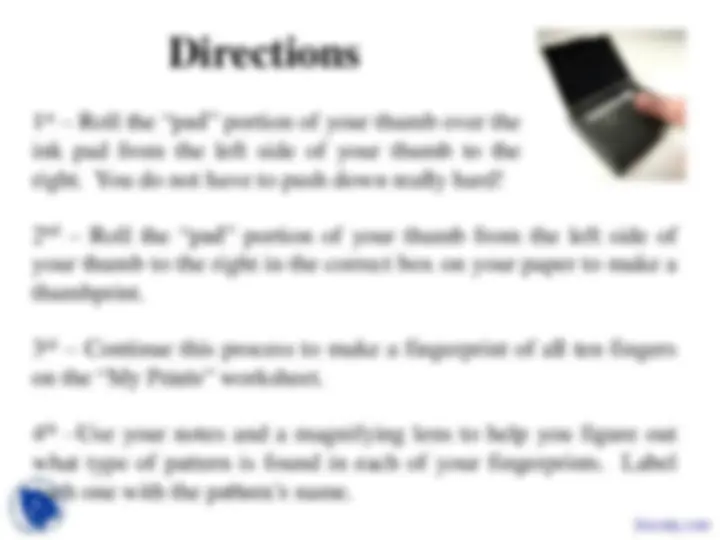


Study with the several resources on Docsity

Earn points by helping other students or get them with a premium plan


Prepare for your exams
Study with the several resources on Docsity

Earn points to download
Earn points by helping other students or get them with a premium plan
Community
Ask the community for help and clear up your study doubts
Discover the best universities in your country according to Docsity users
Free resources
Download our free guides on studying techniques, anxiety management strategies, and thesis advice from Docsity tutors
Forensic science (often shortened to forensics) is the application of a broad spectrum of sciences and technologies to investigate and establish facts of interest in relation to criminal or civil law. This lecture includes: Finger Prints, Fingerprint Principles, Individualcharacteristic, Exactsame, Remainunchanged, Skindiseases, Generalcharacteristic, Visual Pattern, Radial Loop, Ulnar Loop
Typology: Slides
1 / 20

This page cannot be seen from the preview
Don't miss anything!













Docsity.com
that allow them to be systematically identified.
Docsity.com
Did you know?
Fingerprint Factoid:
60% of people have loops, 35% have whorls,
and 5% have arches
Docsity.com
Arches are the simplest type of fingerprints that are formed by ridges that enter on one side of the print and exit on the other. No deltas are present.
Plain Arch Ridges enter on one side and exit on the other side.
Tented Arches Similar to the plain arch, but has a spike in the center.
Spike or “tent”
Docsity.com
Docsity.com
bsapp.com Docsity.com
bsapp.com Docsity.com
Loops must have one delta and one or more ridges that enter and leave on the same side. These patterns are named for their positions related to the radius and ulna bones.
Delta
Ulnar Loop (Right Thumb) Loop opens toward right or the ulna bone.
Radial Loop (Right Thumb) Loop opens toward the left or the radial bone.
NOTE: On the left hand, a loop that opens to the left would be an ulnar loop, while one that opens to the right would be a radial loop. Docsity.com
bsapp.com Docsity.com
Print from the right hand
bsapp.com Docsity.com
Whorls have at least one ridge that makes (or tends to make) a complete circuit. They also have at least two deltas. If a print has more than two deltas, it is most likely an accidental.
Draw a line between the two deltas in the plain and central pocket whorls. If some of the curved ridges touch the line, it is a plain whorl. If none of the center core touches the line, it is a central pocket whorl.
Plain Whorl
Central Pocket Whorl
Docsity.com
Accidental Whorl
Accidental whorls contain two or more patterns (not including the plain arch), or does not clearly fall under any of the other categories.
Double Loop Whorl
Double loop whorls are made up of any two loops combined into one print.
Delta
Delta
Docsity.com
It’s time to make
some prints!
Avoid
Partial
Prints
GOOD PRINT Get as much of the top part of your finger as possible! Docsity.com
Directions
1 st^ – Roll the “pad” portion of your thumb over the ink pad from the left side of your thumb to the right. You do not have to push down really hard!
2 nd^ – Roll the “pad” portion of your thumb from the left side of your thumb to the right in the correct box on your paper to make a thumbprint.
3 rd^ – Continue this process to make a fingerprint of all ten fingers on the “My Prints” worksheet.
4 th^ – Use your notes and a magnifying lens to help you figure out what type of pattern is found in each of your fingerprints. Label each one with the pattern’s name.
Docsity.com